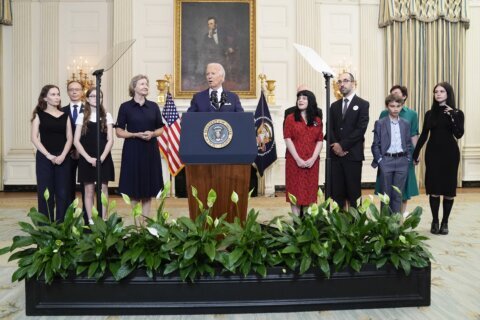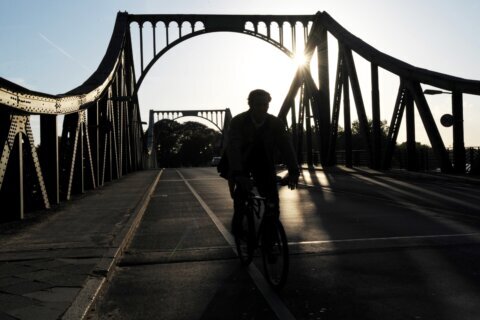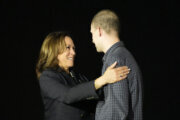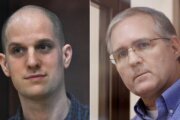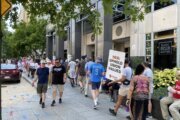Along with much of the country, Knollwood Life Plan Community in the District of Columbia went into lockdown in mid-March to try to protect residents and staff from the COVID-19 pandemic.
The retirement community includes sections for independent living, assisted living and skilled nursing. The leadership team stopped allowing visitors to the facility, which is typically home to 280 people — all of whom are retired military service members, former high-level federal government officials and family members. Residents range from those living independently to those needing a high level of care. They are served by 250 staffers, who all began wearing personal protective equipment, including masks, disposable gloves and full gowns, when the pandemic began.
The first weeks of lockdown seemed fine.
Everything changed six days before Easter, on April 6. That day, the District of Columbia Medical Examiner’s office called to notify community officials that a Knollwood hospice resident who had recently died, a woman in her 90s, had tested positive for COVID-19.
The deadly new virus had penetrated Knollwood.
[Read: Unsung Heroes Fight the COVID-19 Pandemic.]
Leaders quickly launched a military-style response to ramp up testing of residents and staff. “It was chaotic,” says Col. Paul Bricker, a retired Army helicopter pilot and Knollwood’s chief operating officer who commanded the effort. “It reminded me very much of being in Afghanistan in a firebase under attack. I almost started wearing camouflage to work.”
Bricker’s wartime aviation experience — he served in Afghanistan and Iraq — informed his efforts.
“When you fly into fog, you’re flying blind,” he says. “Testing provides a light through the (fog) to better understand what you’re dealing with.” As a helicopter pilot, Bricker could rely on his instruments when visibility was poor. Similarly, he knew that mounting a testing effort could illuminate who was infected by the virus, which would help Knollwood stop its spread by quarantining infected residents and staffers for two weeks — until they were no longer contagious, in accordance with guidance from the Centers for Disease Control and Prevention.
In early April, officials decided to launch an offensive against the virus start by testing everyone in the skilled nursing neighborhood, residents and staff.
Skilled nursing is the smallest of three neighborhoods at Knollwood, and is home to residents who are most vulnerable and require full-time care. This neighborhood includes a skilled memory care section, for people with conditions like Alzheimer’s disease. The majority of Knollwood residents live in independent living, and a smaller number in assisted living.
After the Medical Examiner’s notification, Bricker and his colleagues made a series of phone calls and obtained 150 COVID-19 tests. Then Bricker and his team met with CDC officials to discuss the plan to ramp up testing.
Soon after, with the help of CDC doctors who came to the community, Knollwood began testing residents and staff members. Testing began in the skilled nursing section, where the resident who had died with COVID-19 had lived. It’s also where Knollwood’s most vulnerable residents are; their average age is 91, and many have comorbidities that make them particularly susceptible to grave complications from COVID-19.
A handful of residents tested positive. After about two weeks, 11 staff members — about 5% of the facility’s workforce — had tested positive. Many of those who were infected were asymptomatic or had mild symptoms.
“I was blown away (by the number of positives),” Bricker says. “Worse, we found out that although the virus was largely contained, we had 18 residents in a small skilled nursing neighborhood who were COVID positive, of whom 80% were asymptomatic. Testing was the critical path to having the knowledge to protect and treat the entire Knollwood community.”
[Read: Mother-Daughter Nurse Team Both Treating Coronavirus Pandemic.]
Staff who tested positive were asked to quarantine at home, at full pay. “We received a paycheck protection loan, so they could heal at home (with no loss of income) without worrying about providing for their family,” Bricker says. “They go home and sit it out.”
Within a few weeks, Bricker’s team obtained rapid tests that show results in 15 minutes. As they obtained more tests, they expanded testing beyond the skilled nursing neighborhood, to the entire facility.
To date, more than 4,000 tests have been administered, mostly through regularly scheduled, repeated testing.
The testing offensive has paid off: No residents have tested positive for the virus since May.
To stay on top of the issue, Knollwood leaders created a Coronavirus Review Board that’s overseen by top officials and the retirement community’s medical director.
Since the beginning of the pandemic, Knollwood has lost nine skilled nursing patients to COVID-19, all of whom were age 90 or above. The virus also claimed the lives of two Knollwood staff members. More than two dozen staff members have recovered from COVID-19.
Other nursing homes have lost far more residents to COVID-19; in one facility in Washington state, the virus killed at least 35 people.
Throughout the crisis, Knollwood’s nursing staff continued to provide care to residents, knowing that even with all the safety protocols they were following they were putting themselves at risk for infection, says Arlette Kesseng-A-Mbassa, director of nursing.
[Read: Speech-Language Pathologists Join the COVID-19 Front Lines.]
“In spite of the unknowns of this new pandemic, it never stopped them from going in and taking care of the residents and doing the best job they could,” she says. “Some of our nurses have been here for 25 years. They are like our family. Even though it was hard to be here, we knew the residents counted on us. We needed to be here to take care of them.”
Bricker says the entire Knollwood workforce shares a sense of mission to take care of their residents.
“We have residents who have been teachers, ministers, journalists, nurses, doctors and worked in federal agencies or the armed forces and served in wars like Desert Storm,” he says. “These are folks who have served our nation. We have a duty to them.”
More from U.S. News
Coronavirus Prevention Steps That Do or Do Not Work
Helping Nursing Home Residents Overcome COVID-19 Isolation
Toilet Etiquette to Reduce Coronavirus Spread
Military-Style Response at One Retirement Community Stymies COVID-19 originally appeared on usnews.com

